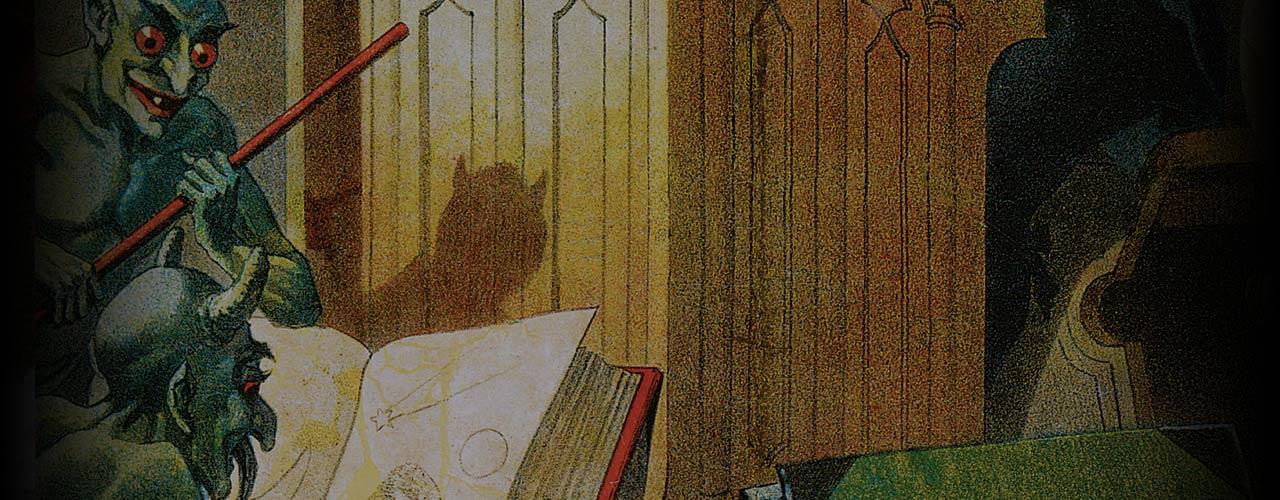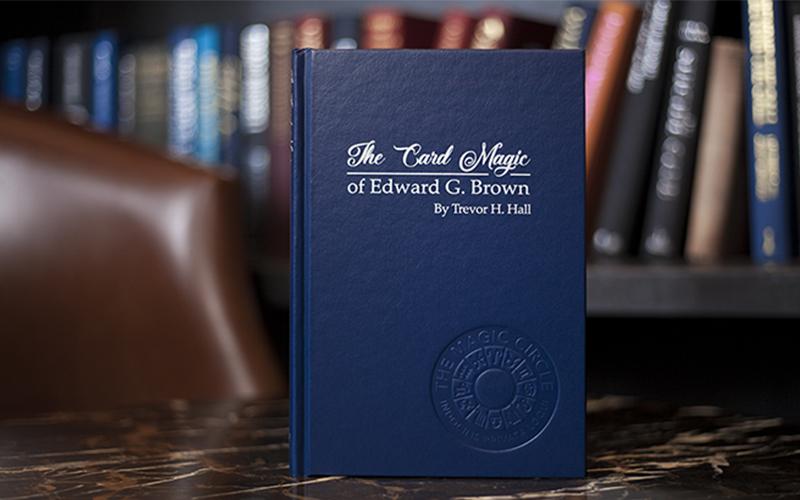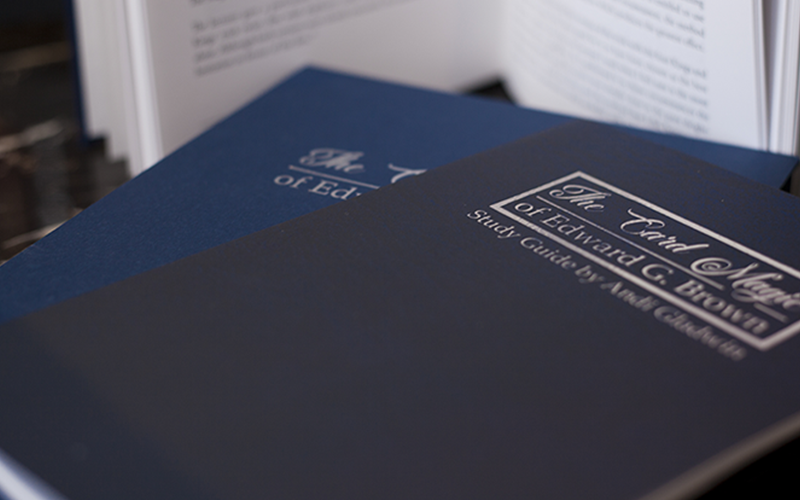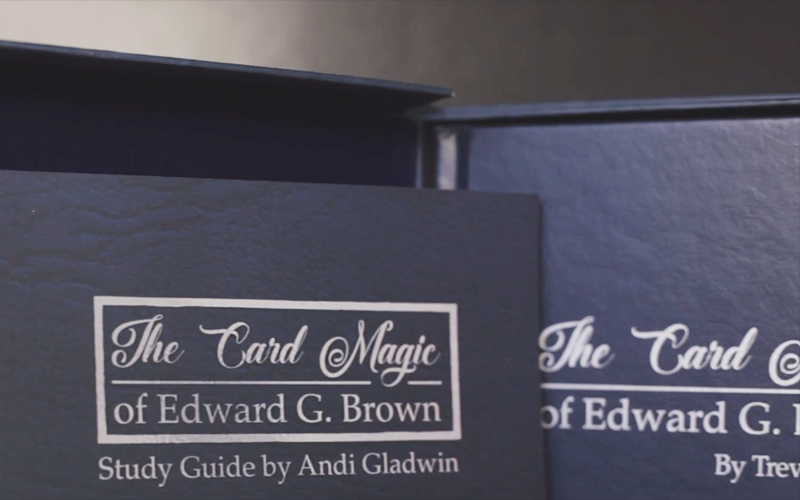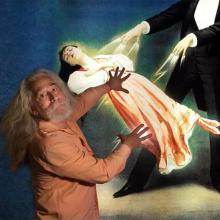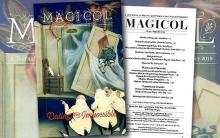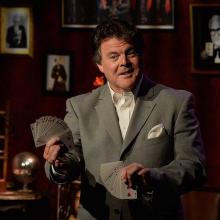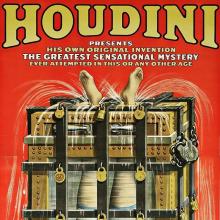Submitted by Jamy Ian Swiss on
The Card Magic of Edward G. Brown by Trevor Hall
With an accompanying Study Guide by Andi Gladwin
Reviewed by Jamy Ian Swiss
Despite much hand wringing in magic over the past decade about the imminent death of the printed book, it certainly appears that magic books are alive and well. Granted there aren’t as many major publishers left anymore; and many books are now self-published, fortunately with quality control steadily improving. But that said, the stack of good books gathering for me to read and review seems ever growing.
One sign of good health in magic publishing is that Vanishing Inc.[i] is willing to undertake a project such as their new release, The Card Magic of Edward G. Brown—an abundantly admirable effort, both well conceived and executed. While it is an admittedly unlikely commercial product, this package amounts to something of a gift to the magic community.
When The Card Magic of E.G. Brown was initially released in 1973—written by Trevor Hall and published by the Magic Circle—few took much notice. Even within his native UK, Brown had become a distant memory, having passed away in 1947, and one wonders how long it took to sell the meager five hundred copy print run, the Circle’s first undertaking as a publisher.
Who would have guessed that the first edition that resides on my bookshelf would end up selling for as much as three or even four hundred dollars in recent years? While collectors may whine about diminishing resale values when older out-of-print titles are refreshed with new editions, I, for one, am grateful for this lovely new edition of Brown, which is also a pet project of Vanishing Inc. co-founder, Andi Gladwin.
But this is no mere reprint of the original book—it is so much more. First, the new clothbound hardcover edition is handsomely produced, complete with silver stamping and a front-cover embossing of the Magic Circle logo. What’s more is the accompanying thirty-eight-page, perfect-bound paperback booklet of editorial notes written and compiled by Andi Gladwin. Gladwin is both a serious student of Brown’s work, and a magician who routinely uses a number of Brown’s routines in his own professional repertoire. This Study Guide is also the result of Gladwin’s research into the historical record of Brown’s work and creations, along with Gladwin’s thoughts on handling improvements and variations. The Study Guide is an invaluable companion to the volume, assisting the reader in better understanding and appreciating Brown's material. To complete the package, the two books are tucked together into a beautiful matching slipcase. The entire concept is a delight from start to finish—and at the retail price of $60, it is, quite simply, a bargain.
So for those who came in late,—which is almost everybody—who was Edward G. Brown? Born in London in 1893, he was a lifelong amateur magician and a banker by trade, who became an important officer of the Magic Circle, serving as its librarian and later as its treasurer, holding the latter post until his death in 1947. But unlike many magic club politicians, Brown was no armchair enthusiast. Rather, he was widely considered among the cognoscenti of the era to be one of Britain’s most elite sleight-of-hand artists. Dai Vernon, in his “Vernon Touch” column in Genii, recounted that, “When I was in England some years ago John Ramsay told me that Edward Brown was definitely the finest sleight-of-hand performer in the country”—a sentiment that was echoed by no less than Charlie Miller.
Yet, despite such stellar credentials and Brown’s popularity at the Circle as a performer and lecturer, Brown has been thoroughly forgotten by most—or, in the words of Max Maven, “forgotten twice”—that is, in the aftermath of his death, and later again, following the short burst of interest that the original publication of his book engendered.
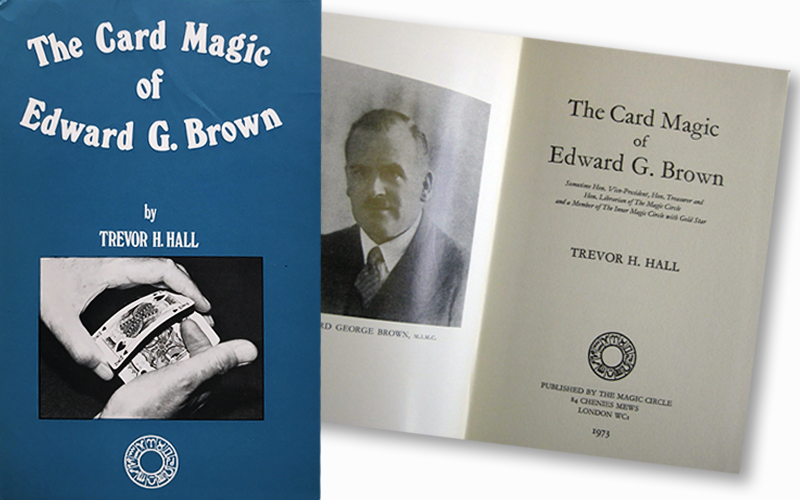
While we are fortunate that someone at least undertook the writing of Brown’s work, the truth is that, as Andi Gladwin gently implies, Trevor Hall was not the ideal choice. The fact that Hall was more of a writer of history than one of conjuring instruction probably contributed to the weak appeal of the original book. Hall knew Brown and had corresponded with him somewhat. This association, combined with Hall being a member of the Circle’s publishing committee, led to Hall’s offering to be the book’s author. But sadly Hall lacked the expertise in the kind of sleight-of-hand magic that Brown excelled at, and in the historical context and credit history of the work. As a result, among other faults, Hall often failed to correctly credit Brown where credit was due.
On the plus side, Brown had only previously published a few tricks, and they were all in journals like The Sphinx, so the Hall book is valuable in that it records a greater quantity of Brown’s work. What’s more is that the book opens with biographical material and remembrances of Brown’s life and his service to the Circle. Perhaps the most interesting of all, the book’s final segment contains seventy pages describing six of Brown’s popular and impactful lectures at the Circle.
The “Card Magic” section records seventeen routines, the first of which—“The Spelling Trick”—is perhaps the best known trick associated with Brown, albeit the plot long predates his personalized handling, dating back to the late nineteenth century. Variants post-dating Brown include a version in Alton Sharpe’s “Expert Card Conjuring,” a popular version by Paul Rosini that first appeared in The Jinx, and contemporary versions have been published by Juan Tamariz, David Williamson, and Bob White, among others, demonstrating its longstanding and continuing appeal.
The plot utilizes ten cards—Ace to Ten—which are randomly mixed. The magician spells out “A-C-E,” moving one card from the top to the bottom of the pile for each letter, and when he turns up the next card, it’s the Ace. This card is set aside, and the procedure continues until all the cards are spelt to and discovered, in order. However, at one point the packet is handed to a spectator, who repeats the procedure, but fails to locate the correct card. In Brown’s version, a surprising magical transposition serves as climax to the routine.
Brown’s contribution was in developing a solution so that the trick could be performed impromptu from a shuffled deck. The original description, drawn from a letter written by Brown, is understated to the point of minimizing the context and value of Brown’s version, and the commercial appeal of this plot, which has been popular for more than a century.
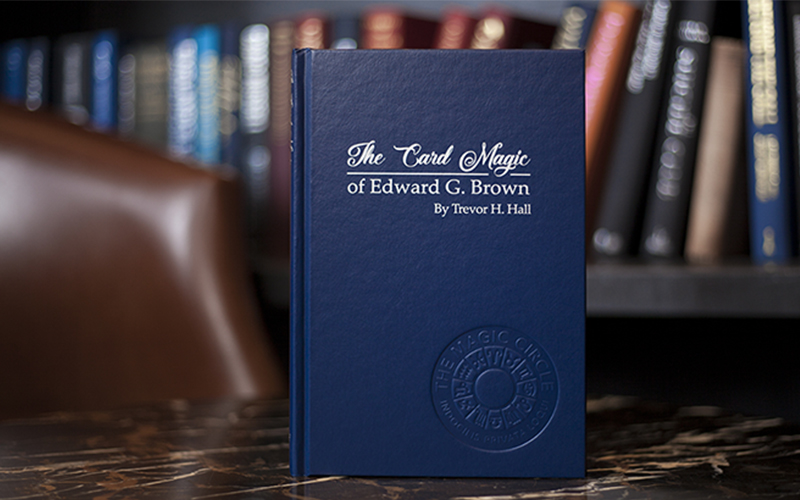
One feature of Brown’s work, as Gladwin points out, is Brown’s ability to turn close-up card tricks into parlor and standup material: partly from his choice of method, and partly from his choice of staging. A perfect example is the second trick of the book, Brown’s version of Hofzinser’s “Everywhere and Nowhere.” Here, Gladwin’s accompanying notes on this routine are invaluable. In tracking some of the origins of Brown’s handling, Gladwin points out a discovery first noted by Ed Marlo, namely that Brown is the first to use a “diminishing lift” sequence—i.e. a triple lift followed by a double lift—to create the illusion of multiple copies of a singular card. Elsewhere Gladwin notes that Brown appears to have been the first to devise a sequence along the lines of what has become known as Marlo’s “Quick 3-Way” sequence, preceding Marlo by several years.
In his notes on the routine, Gladwin considers Brown’s use of a Push-Off style of a double-lift, which was unusual for the time and generally identified with Dai Vernon. Did Brown hear about Vernon’s handling and recreate an approximation? Or did Vernon hear about Brown’s? Gladwin leaves the question as an open one, along with similar speculation about the Push-Off False Count that Brown uses, that has also long been attributed to Vernon. No matter the answers, it’s clear that cutting-edge sleight-of-hand thinking and technique characterized Brown’s work.
On the staging side, Brown utilizes a number of valuable ideas, notably the use of drinking glasses for displaying the cards in platform performance. He also eliminates the deck in the course of his handling—an idea that lends further clarity to the plot. Brown’s handling also relies on sleight-of-hand and misdirection, rather than gaffed cards. Ultimately the case is clearly made that Brown’s routine, along with other related references provide by Gladwin, is a worthy and, at the time, an innovative approach to the classic Hofzinser plot.
One cannot discuss E.G. Brown’s work without considering his neo-classic plot, the “Twelve Card Thought Transposition.” In brief, a spectator counts out twelve cards, which are divided into two packets. These packets are held by two spectators and kept widely separated—across the table, the stage, or the entire room—and a spectator merely thinks of a card in one of the packets. Without bringing the packets together, the thought-of card vanishes from one packet and arrives in the other.
This is perhaps Brown’s most lasting effect, and one that has been varied and utilized by countless professionals ever since. Gladwin waxes enthusiastically about his own reliance on this effect in his own repertoire of platform magic, as do other notable performers in the promotional quotes about the book. The trick is practical, memorable, and utterly amazing. If you don’t know it, you should—and you’ll want to pay attention to Gladwin’s original addition, which provides an apparent impromptu repeat of what is already a mind-boggling mystery.
That’s just two of seventeen routines, and there are many interesting elements to be found throughout. Although it may be an obvious statement, I think it’s worth commenting that the closer the reading you give this material, the greater the value you will elicit. I particularly liked Brown’s version of the Diminishing Cards, a plot that is usually confined to the stage performed by card manipulators. Brown’s handling is quite deceptive and could be done in fairly close quarters, and certainly in parlor settings.
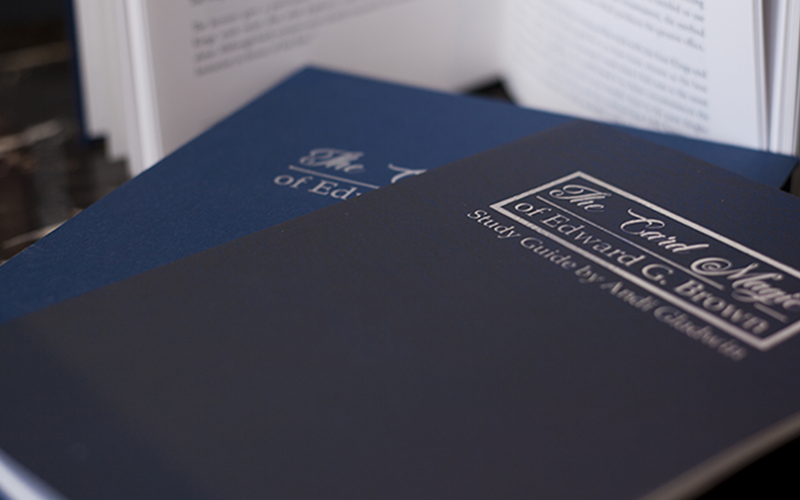
Close attention to Gladwin’s notes will also produce rewards, including excellent referencing for further research. In an Ace Assembly routine, Brown innovates an early version of the Braue Addition, including some valid motivating elements to justify the procedure. Gladwin also provides a previously unpublished Dai Vernon trick, extracted in the course of his research from a 1956 letter from Francis Haxton (of the Magic Circle) to Stewart James.
On top of that, we get six Brown lectures, starting with “Conjuring for Conjurors,” which cautions that magicians consistently reward novelty over quality, as is constantly seen in contemporary magic contests. “Lecture Without a Name” includes a range of Brown’s conjuring contemplations, including a nice consideration of why both imitation and originality can often contribute to the creation of lousy magic. Here again, ideas from eighty years ago remain perfectly relevant and thought provoking today, and I highly recommend Brown’s timeless remarks.
More systematic deconstructive work can be found in “A Brief Analysis of the Principles of Mental Magic.” This is a good primer for the would-be mentalist that may lend clarity to one’s work in this field, which often suffers from confusion in the relationship between method and effect. The lecture on “Misdirection” is similarly useful, emphasizing, for example, that positive statements serve far better as effective misdirection over negative statements: “‘There is nothing up my sleeve,’ obviously also contains the suggestions that there might possibly be something up the sleeve.” And the lecture on “Forcing,” while not exhaustive, provides a thorough analysis and tools for thought about this subject. It also provides practical guidance on making better choices for the best type of force to use for various plots and desired outcomes.
I couldn’t be more pleased with this unique publication. I enjoyed revisiting the Brown book, which I hadn’t consulted in many years. And, while the book is fascinating to a student of the card conjuring record, one should not make the mistake of overlooking the commercial potential in a number of Brown’s tricks, particularly when it comes to parlor-scaled card magic. And Brown was a clear and careful thinker, rendering the essay-like reports of his lectures valuable and timeless contributions.
I confess that I would have been happy to see Andi Gladwin write at even greater length in his accompanying booklet. He seems reticent to get in the way of the source material, but Gladwin’s work is invaluable to the student. While Gladwin provides references for the handful of other published Brown effects, I think it would have been useful to include reprints of that small collection, for sake of a more readily completed study of Brown’s work. Meanwhile, it should be noted that there are a few more photographs of Brown added to this new edition and as well to the Study Guide, and these are appreciated.
In sum: the entire concept and production is not only valuable, but frankly admirable.
[i] In the interests of full disclosure, Vanishing Inc. is currently the publisher of my three volumes of essay collections and two instructional videos.
—♦—
Two-book slipcased set includes: The Card Magic of Edward G. Brown by Trevor Hall, hardbound, cloth cover 6 x 9 inches, 192 pages; and perfect-bound, paperback booklet, Study Guide by Andi Gladwin, 32 pages. Published by Vanishing Inc. (2018) Price: $60
SEE LYONS DEN INDEX

